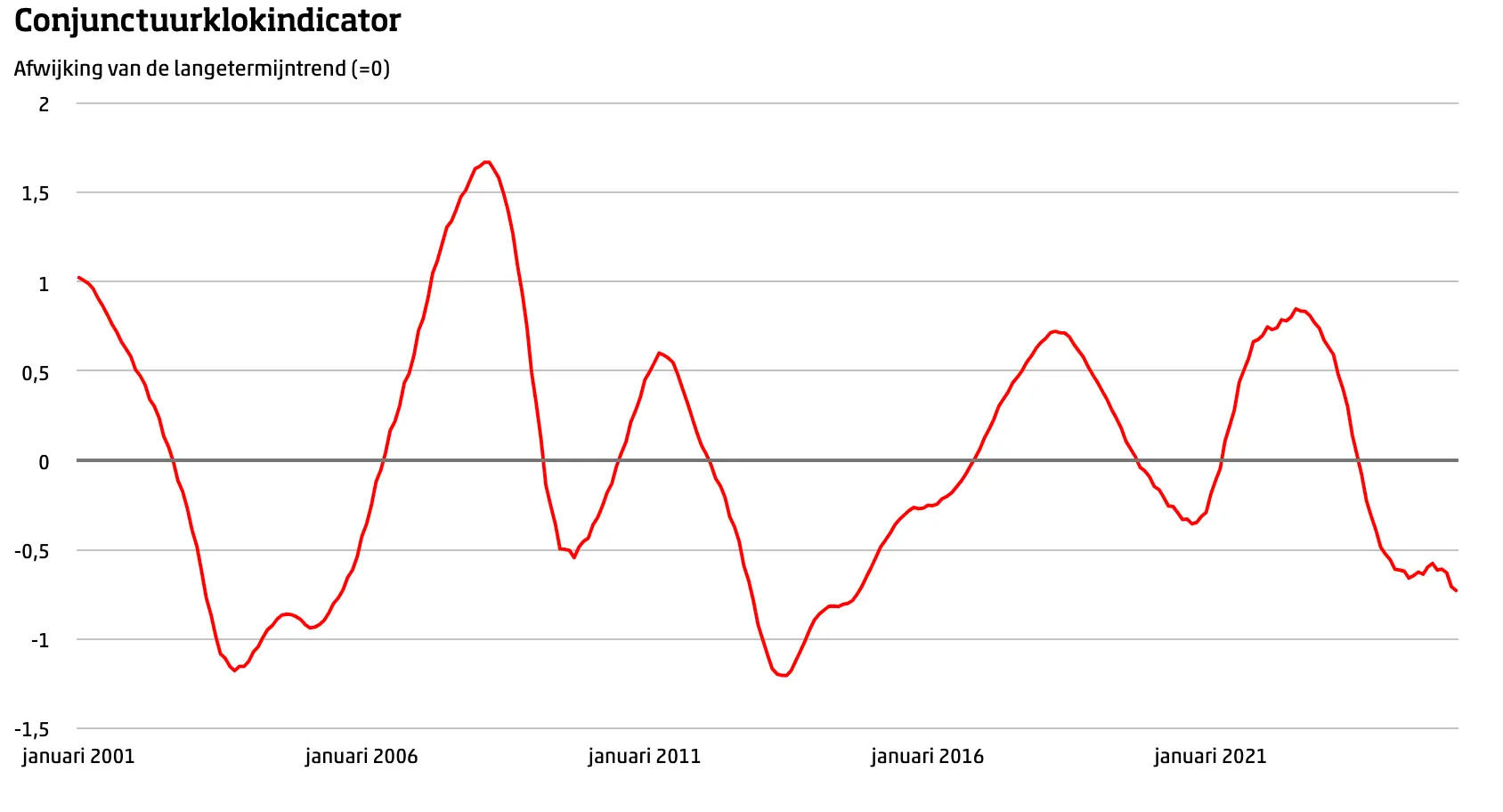The Illusion of Progress: Why “Waves” Matter More Than Numbers
Let’s begin where most articles end: the business cycle is not a spreadsheet artifact or a journalist’s cliché. It is the heartbeat of our economic system, pulsing through uncertainty, exuberance, fatigue, and renewal—regardless of what governments, banks, or armchair analysts proclaim. Ignore the cyclicality, and you’re not managing risk; you’re sleepwalking into it.
The so-called Business Cycle Clock Indicator is not a toy for economists. It is a diagnostic instrument for anyone who values foresight over hindsight. Here, the “clock” visualizes the rhythm of expansion, contraction, and the perilous pauses in between. Today, let’s not worship the numbers. Let’s ask why the cycle matters—especially now.

The Anatomy of the Clock: Twelve Signals, One Reality
This indicator doesn’t rely on GDP (the favourite drug of policy addicts). Instead, it averages twelve real signals: production, investments, consumer sentiment, unemployment, export trends—each a nerve in the body economic. The unweighted average removes the illusion of “strong sectors hiding weakness elsewhere.”
The colour coding? Not a childish game. It’s a warning: each colour means an underlying shift in momentum, and pretending otherwise is pure self-delusion.
- Above trend and accelerating? Don’t get cocky—overheating is real.
- Below trend and decelerating? Time to look for the rot behind the optimism.
April 2025: Growth Slows, Optimism Fades
Here’s the clinical fact: in April 2025, the Business Cycle Clock Indicator sits at -0.71. Translation: growth is not just below the long-term trend—it’s also losing pace.
Not flat. Not “soft landing.” We are in the danger quadrant where optimism fades and “business as usual” becomes a fatal excuse. This is when boards stop talking about innovation and start whispering about “efficiency” and “cost containment.” This is when compliance fatigue sets in, and systemic distortion—hidden risks—begin to metastasize.
Why Does This Matter? The Tension Behind the Numbers
1. Cyclicality Is Structural, Not Statistical:
Waves are not “noise.” They are the system’s way of breathing. Interventions—fiscal, monetary, regulatory—may smooth the amplitude, but never erase the tide. Believing otherwise is managerial hubris. If you don’t map your risk and compliance posture to the wave, you will drown in the undertow.
2. The Clock Reveals Behaviour, Not Just Metrics:
A business cycle indicator is not about comfort; it’s about clarity. When growth slows below trend, watch for the micro-behaviours:
- Shortcutting controls (“Let’s skip a step—just this quarter”)
- Over-optimistic forecasts (Wishful thinking in boardrooms)
- Silent distress in supply chains (Delays, defaults, excuses)
3. The Real Blind Spot: Complacency in the Downturn
The greatest risk is not contraction, but denial. Most organizations do not fail because of a bad quarter, but because they fail to recalibrate when the clock turns. They chase lost growth, ignore tension zones, and treat lagging indicators as future predictors. The cycle punishes delay—every single time.
How to Read—and Respond—to the Clock
- Stop treating averages as reality. The “-0.71” is a symptom, not a cause. Drill down into the twelve indicators and map divergence—between headline trends and operational signals.
- Rethink your risk assumptions. Are your controls and compliance checks designed for expansion, or contraction? Have you stress-tested for “below trend and decelerating” scenarios?
- Challenge your culture. Is your team empowered to report slowdowns—or are they incentivized to hide them until it’s too late?
The Final Word: Structure Beats Slogans
The Business Cycle Clock is not a weather forecast. It is a test of your system’s structural integrity. Most will use it to justify decisions already made. The wise use it to ask uncomfortable questions—before the system asks them for you.
If you want clarity, don’t look at the line; look at what the line provokes, conceals, and reveals.
Business is not about beating the cycle. It’s about learning to navigate it—ethically, rigorously, and with both eyes open.
Co-Founder of Xtroverso | Head of Global GRC
Paolo Maria Pavan es la mente estructural detrás de Xtroverso, combinando el rigor del compliance con la visión estratégica del emprendimiento. Observa los mercados no como un trader, sino como un lector de patrones—rastreando comportamientos, riesgos y distorsiones para orientar una transformación ética. Su trabajo desafía convenciones y redefine la gobernanza como una fuerza de claridad, confianza y evolución.
